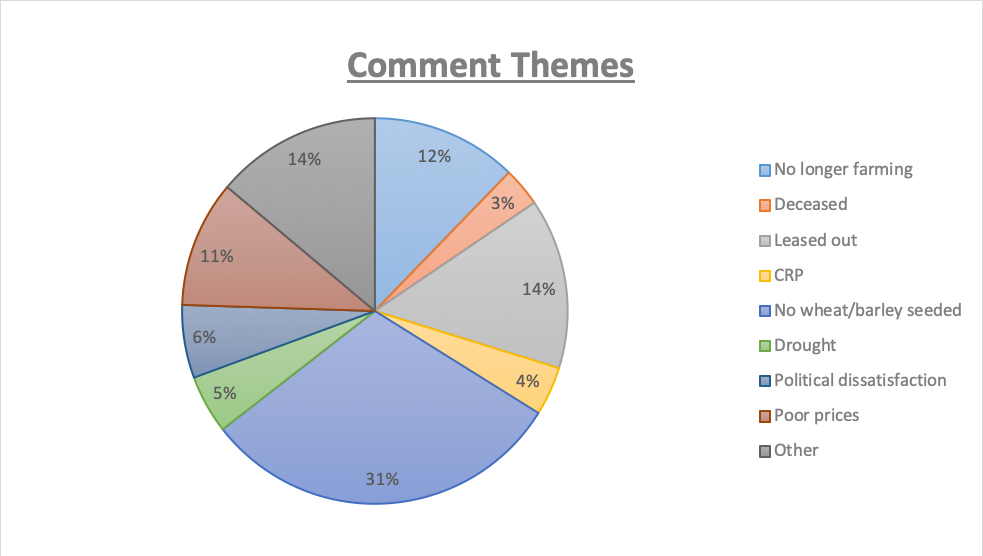This post was written with assistance from MSU DAEE graduate student Molly DelCurto.
Anton Bekkerman and I sent out a survey about wheat varieties and other topics over the summer. (See here and here for other blog posts on that survey.) We also asked for comments, unrelated to any particular topic. We received quite a few. The comments fell into two general categories—reasons for not answering all or some survey questions, and sentiment about farming in general. In all, we received 248 comments from 620 surveys that were returned. Some people made more than one comment, or had comments that overlapped categories. What were people saying?
The largest group of comments (31%) reported not or no longer farming any wheat or barley varieties—the focus of our survey. The next highest response category (14%) was respondents reporting they do not farm, but lease out their farm land. 12% reported that they are no longer farming at all. An additional 4% reported that their farm land was under the Conservation Reserve Program (CRP), and 3% reported that the farmer was deceased.
On the topic of general farming sentiment, comments expressed mainly dissatisfaction. About 11% of comments expressed that the market prices for wheat and barley were too low, 6% commented that they were unhappy with the current political climate, 5% reported concern about the most recent drought conditions. The following charts break down the comments by group. Note that several comments do not fit into either dissatisfaction or no longer farming categories, and some of these included positive comments about farming.
Overall, comments were fairly negative. But as one producer said to me in a recent conversation about general struggles in agriculture, “We still have to be optimistic because we are farmers.” So, how should these comments be interpreted?
For one thing, they should be interpreted with a note of caution—these comments were made over the summer, and things are changing nearly every day right now with regard to farm policy, tariffs and retaliatory tariffs, macroeconomic conditions, and many other factors. They are also a relatively small number and people who comment may well not be representative. Any evidence presented is anecdotal.

Overall, 53 of the total comments (21%) expressed some form of dissatisfaction. Of those comments, 49% expressed discontent about current wheat and barley prices, 28% were unsatisfied about the current political climate, and 23% expressed concern about recent drought conditions.

A strikingly large percentage (over 60%) of the total comments reported either no longer farming at all or no longer planting wheat or barley specifically. Out of the 158 comments about no longer farming, 48% stated that they were no longer farming but did not elaborate, 22% said they were leasing their farm land out, 19% commented they had no wheat or barley seeded, 6% said their land was under CRP, and 5% said the previous farmer was deceased. We did not ask any follow-up questions about when or why they had stopped planting wheat or barley. Some of the reasons for dissatisfaction, shown above, may be partial explanations. We can ask further questions when we repeat the survey next year.
What else should we ask?

